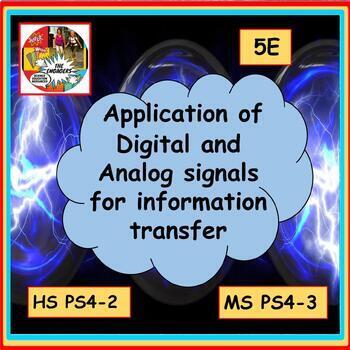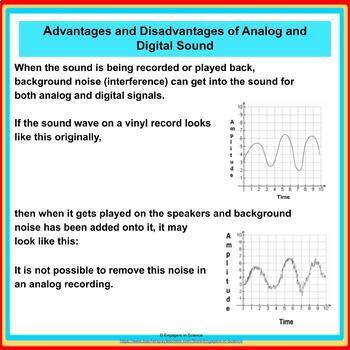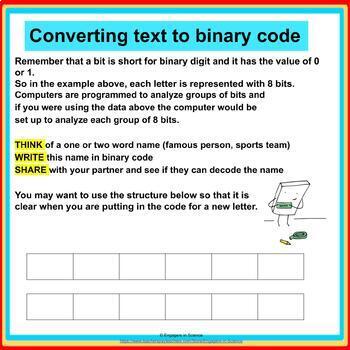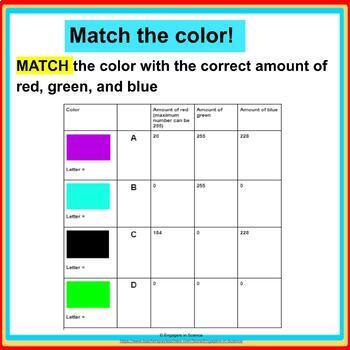Application of Digital and Analog Signals for Information Transfer 5E MS-PS4-3
- Google Drive™ folder

What educators are saying
Description
Students live in a digital world but the majority of them do not understand what that means. These engaging lessons (GOOGLE and PDF versions) allow students to develop a concrete understanding of the differences between analog and digital devices, and how analog text, sound, and images are converted to digital.
This activity supports the NGSS standards MS PS4-3 and HS PS4-2
These 5E lessons are launched with an anchor phenomenon which is revisited during the unit.
A number of activities (shown below) are included in these lessons to foster student understanding of these complicated concepts.
Students will:
Use visible light as a signal to send a message.
Convert simple sound waves (analog) to a digital wave pulse graph.
Convert simple text to binary code (digital).
Explore a digital image to view the pixels and the amounts of the three lights used.
Discuss, read text, and watch videos to identify advantages and disadvantages of analog and digital devices.
Identify, with evidence and reasoning, which signal (analog or digital) is the best to store and transmit evidence.
Teachers are given a choice of student assessments which includes using the CER (claim, evidence, reasoning) structure to write their conclusion.
Answers are given in the detailed teacher notes, and a rubric is included.
The science and engineering practices below are incorporated in this investigation:
Using mathematics and computational thinking.
Engaging in argument from evidence.
The following Cross Cutting Concept is incorporated in these lessons:
Structure and Function:
Structures can be designed to serve particular functions
Included in this resource:
Teacher slides (59 slides)
Detailed teacher notes (29 pages)
Printable student worksheets with activity instructions (23 pages)
You may also like the following physical science lessons:
Introducing waves and their properties MS PS4-1
Exploring the properties of the EM spectrum 5E NGSS MS PS4-2
Exploring sound energy NGSS MS PS4-2 CER
Investigating Newton's First Law of Motion MS PS2-2
Investigating Newton’s Second Law NGSS MS PS2-2 CER
Investigating Newton's Third Law of Motion MS PS2-1
Newton's Three Laws of Motion Investigations Bundle for NGSS MS PS2-1 MS PS2-2
Investigations into balanced and unbalanced forces MS PS2-2 CER
Constructing a space station that can withstand a collision: STEM MS PS2-1
Kinetic energy, mass, and speed investigations NGSS MS PS3-1 CER
Investigating Potential Energy and Energy Transfer NGSS MS PS3-2 CER
Don't forget to give a review for this resource to earn TPT credits towards future purchases!
Email any questions you have with subject line “Analog and digital signals” to us at engagersinscience@gmail.com and we’ll be happy to answer them
Other teaching resources for sale in our Teachers Pay Teachers store can be accessed by using the link below:





